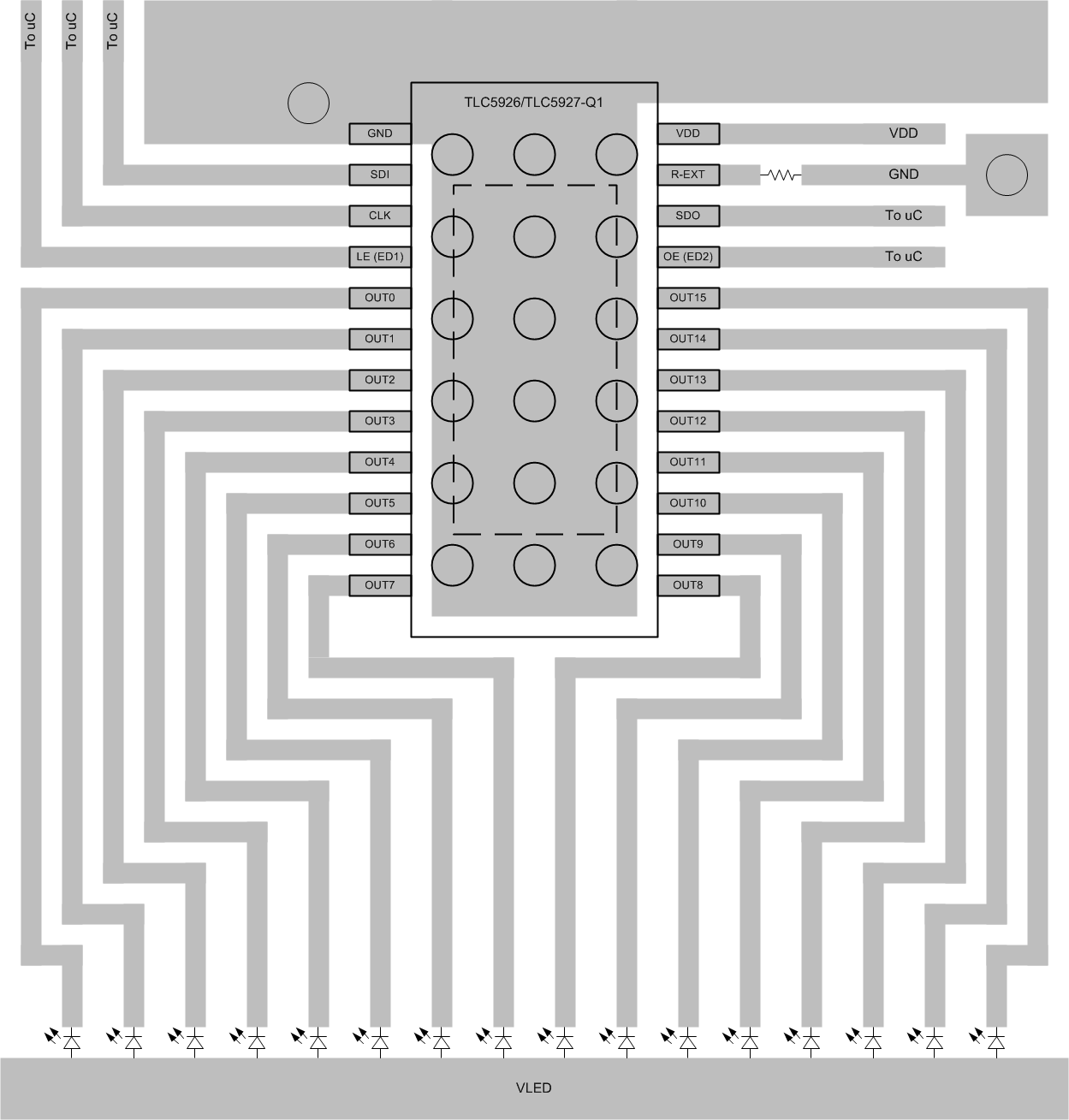SLVS973A September 2009 – July 2015 TLC5926-Q1 , TLC5927-Q1
PRODUCTION DATA.
- 1 Features
- 2 Applications
- 3 Description
- 4 Revision History
- 5 Device Comparison Table
- 6 Pin Configuration and Functions
-
7 Specifications
- 7.1 Absolute Maximum Ratings
- 7.2 ESD Ratings
- 7.3 Recommended Operating Conditions
- 7.4 Thermal Information
- 7.5 Electrical Characteristics: VDD = 3 V
- 7.6 Electrical Characteristics: VDD = 5.5 V
- 7.7 Timing Requirements
- 7.8 Switching Characteristics: VDD = 3 V
- 7.9 Switching Characteristics: VDD = 5.5 V
- 7.10 Typical Characteristics
- 8 Parameter Measurement Information
- 9 Detailed Description
- 10Application and Implementation
- 11Power Supply Recommendations
- 12Layout
- 13Device and Documentation Support
- 14Mechanical, Packaging, and Orderable Information
Package Options
Mechanical Data (Package|Pins)
- PWP|24
Thermal pad, mechanical data (Package|Pins)
- PWP|24
Orderable Information
12 Layout
12.1 Layout Guidelines
The traces that carry current from the LED cathodes to the OUTx pins must be wide enough to support the default current (up to 120 mA).
The SDI, CLK, LE (ED1), OE(ED2), and SDO pins should be connected to the microcontroller.
There are several ways to achieve this, including the following methods:
- Traces may be routed underneath the package on the top layer.
- The signal may travel through a via to another layer.
The thermal pad in the PWP package should be connected to the ground plane through thermal relief vias. This layout technique will improve the thermal performance of the package.
12.2 Layout Example
 Figure 21. TLC592x-Q1 Layout Example
Figure 21. TLC592x-Q1 Layout Example